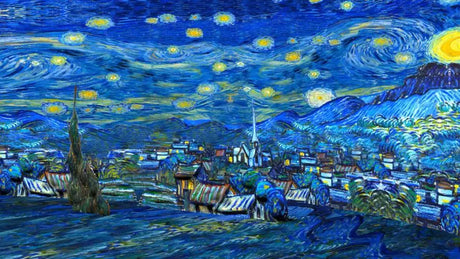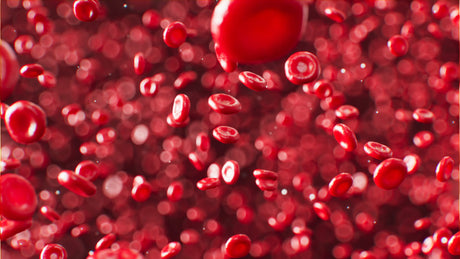The Science Behind Light Therapy
Light interacts with the body at a cellular level, penetrating the skin and influencing biological processes like mitochondrial activity, inflammation, and melanin production.
How Light Affects the Skin and Body
Each color of light reaches different depths of the skin. Shorter wavelengths like blue light stay closer to the surface, while longer wavelengths like red light reach deeper into muscles and tissues.
Understanding Light Wavelengths
| Light Color | Wavelength (nm) | Depth of Penetration |
|---|---|---|
| Blue | 405–495 | Epidermis (Surface layer) |
| Green | 495–570 | Mid-dermis |
| Red | 620–750 | Deep dermis & muscles |
Overview: Red vs. Green vs. Blue Light Therapy
A Quick Comparison Table
| Type | Wavelength | Best For | Key Benefit |
|---|---|---|---|
| Red Light | 620–750nm | Anti-aging, pain, skin repair | Stimulates collagen |
| Blue Light | 405–495nm | Acne, bacteria, mood | Kills acne-causing bacteria |
| Green Light | 495–570nm | Pigmentation, migraines | Calms skin tone & mind |
What Is Red Light Therapy?
Red light therapy works by penetrating deep into the skin to stimulate mitochondria in cells, which in turn helps accelerate healing, collagen production, and tissue repair.
Common Wavelengths Used
Most red light therapy devices operate between 620 and 750 nanometers, a range shown to improve skin elasticity and reduce inflammation.
Benefits of Red Light Therapy
-
Anti-Aging: Boosts collagen and elastin, reducing wrinkles.
-
Muscle Recovery: Used by athletes for faster recovery post-training.
-
Pain Relief: Effective for joint and muscle pain.
-
Improved Blood Flow: Enhances circulation and cellular oxygenation.
Limitations of Red Light Therapy
-
Requires consistent use over weeks to see visible effects.
-
Not effective for treating active bacterial infections.
What Is Blue Light Therapy?
Blue light works primarily on the surface of the skin. It’s most renowned for its antibacterial properties and is frequently used in acne and mood therapies.
Common Wavelengths Used
Typically between 405 to 495nm, blue light reaches the upper layers of the skin, where acne-causing bacteria reside.
Benefits of Blue Light Therapy
-
Fights Acne: Destroys Propionibacterium acnes, the bacteria responsible for breakouts.
-
Reduces Sebum Production: Helps prevent future acne.
-
Improves Mood: Shown to assist in treating Seasonal Affective Disorder (SAD).
Limitations of Blue Light Therapy
-
May cause dryness and irritation in sensitive skin.
-
Can lead to temporary photosensitivity.
What Is Green Light Therapy?
Green light therapy is lesser-known but growing in popularity for its calming effects on both skin and the nervous system. It’s often used in cosmetic and neurological treatments.
Common Wavelengths Used
Falls in the 495–570nm range, it gently penetrates the skin to soothe and balance.
Benefits of Green Light Therapy
-
Hyperpigmentation Reduction: Helps even out skin tone and fade spots.
-
Migraine Relief: Research shows it reduces migraine frequency and intensity.
-
Emotional Balance: Induces calm and reduces stress markers.
Limitations of Green Light Therapy
-
Penetrates less deeply, limiting its use to surface-level skin treatments.
-
Less clinical research compared to red and blue light.
Side-by-Side Comparison Table
| Feature/Benefit | Red Light | Blue Light | Green Light |
|---|---|---|---|
| Penetration Depth | Deep (muscle, dermis) | Surface (epidermis) | Mid-level (dermis) |
| Skin Benefits | Anti-aging, healing | Acne reduction | Pigmentation, soothing |
| Pain & Recovery | ✔️ | ❌ | ❌ |
| Mood Enhancement | ❌ | ✔️ | ✔️ |
| Best For | Recovery, aging skin | Acne, SAD | Dark spots, migraines |
How to Choose the Right Light Therapy
Based on Skin Concerns
-
Acne-prone skin → Blue Light
-
Aging or dull skin → Red Light
-
Uneven tone or redness → Green Light
Based on Health Goals
-
Pain or inflammation → Red Light
-
Mental clarity and calm → Green Light
-
Mood elevation → Blue Light
At-Home vs. Professional Light Therapy Devices
-
At-Home Devices: Great for convenience and affordability. Use FDA-cleared brands for safety.
-
Professional Clinics: Offer stronger wavelengths and customized treatment plans.
Frequently Asked Questions (FAQs)
1. Is light therapy safe for all skin types?
Yes, when used correctly. Always follow device instructions and consult your dermatologist.
2. How often should I use light therapy at home?
3–5 times per week for 10–20 minutes is ideal for most users.
3. Can I combine red, green, and blue light therapy?
Yes! Many devices offer multi-color modes for a comprehensive skin care routine.
4. Does light therapy hurt or cause side effects?
It’s non-invasive and painless. Mild redness or dryness may occur in rare cases.
5. How soon can I see results?
Most users report visible results in 4 to 6 weeks with consistent use.
6. Where can I buy quality light therapy devices?
Look for dermatologist-recommended brands like Joovv, Elvish, or CurrentBody.
Conclusion: Which Light Therapy Is Right for You?
Each color of light therapy has its strengths:
-
Choose red light if you're looking to fight aging, heal skin, or reduce pain.
-
Opt for blue light to treat acne or boost your mood.
-
Try green light if you're battling hyperpigmentation or stress-related issues.
For the best results, consult with a certified skin therapist or use a device that combines all three wavelengths.









